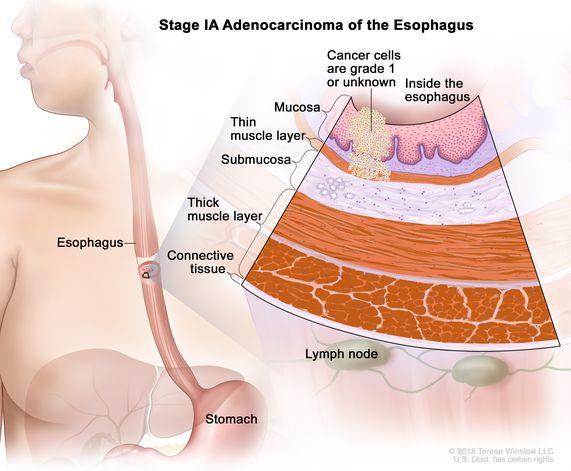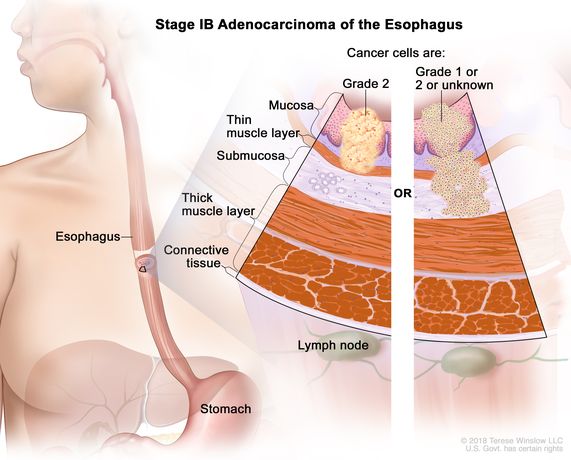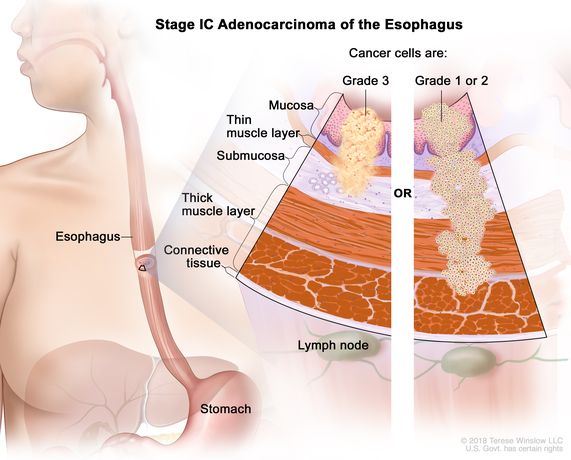stage I esophageal adenocarcinoma
(... ee-SAH-fuh-JEE-ul A-deh-noh-KAR-sih-NOH-muh)
Stage I is
divided into stages IA, IB, and IC, depending on where the
cancer has spread. In stage IA, cancer has spread into the
mucosa layer or thin muscle layer of the esophagus wall.
The cancer cells are grade 1 or the grade is not known.
Grade 1 cancer cells look more like normal cells under a
microscope and grow and spread more slowly than grade 2 and
3 cancer cells. In stage IB, cancer has spread (1) into the
mucosa layer or thin muscle layer of the esophagus wall.
The cancer cells are grade 2. Grade 2 cancer cells look
more abnormal under a microscope and grow and spread more
quickly than grade 1 cancer cells; or (2) into the
submucosa layer of the esophagus wall. The cancer cells are
grade 1 or 2 or the grade is not known. In stage IC, cancer
has spread (1) into the mucosa layer, thin muscle layer, or
submucosa layer of the esophagus wall. The cancer cells are
grade 3. Grade 3 cancer cells look more abnormal under a
microscope and grow and spread more quickly than grade 1
and 2 cancer cells; or (2) into the thick muscle layer of
the esophagus wall. The cancer cells are grade 1 or
2.


